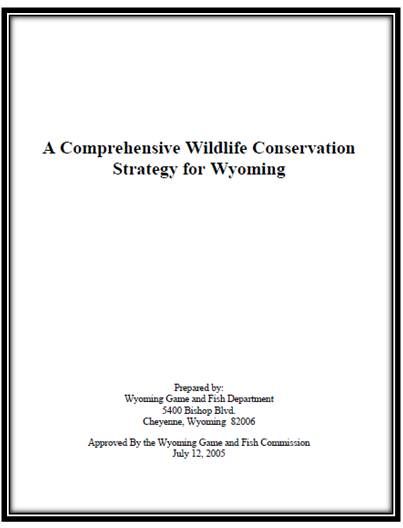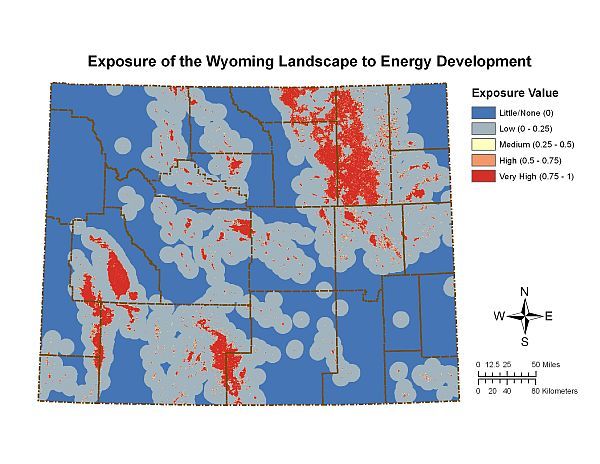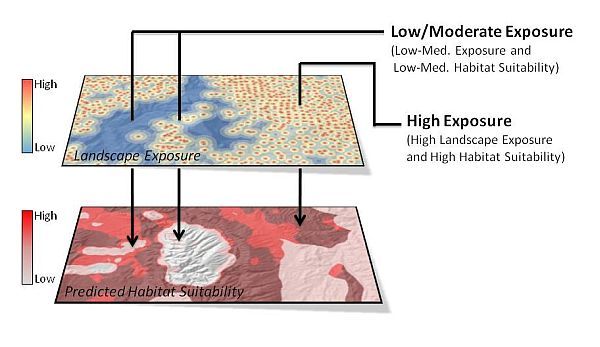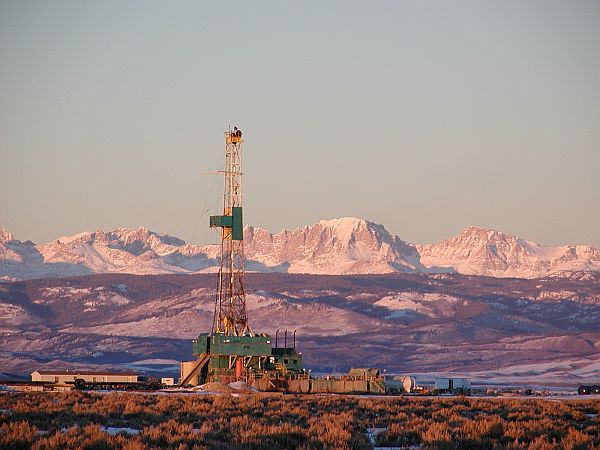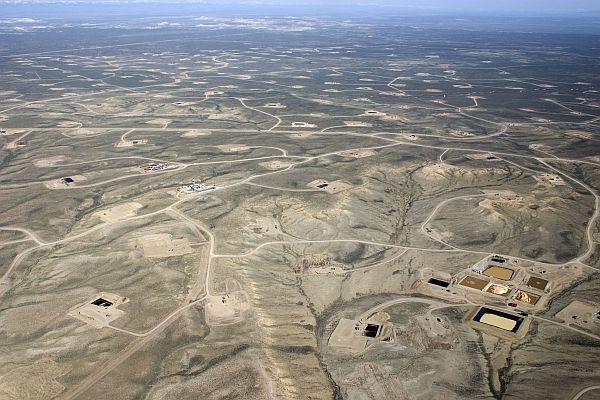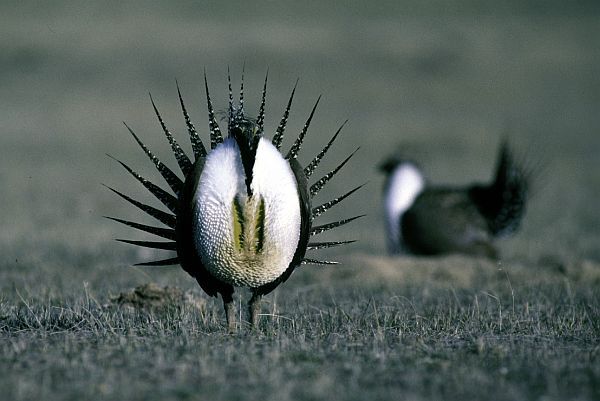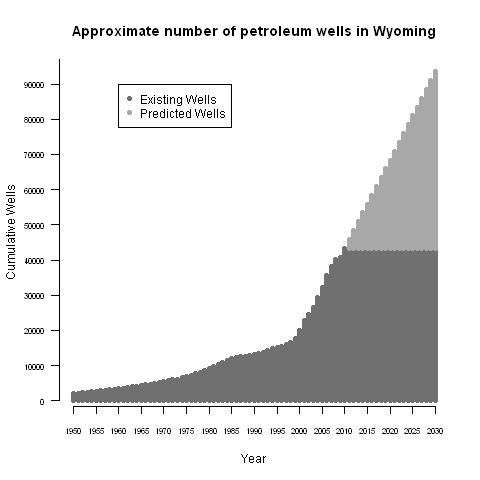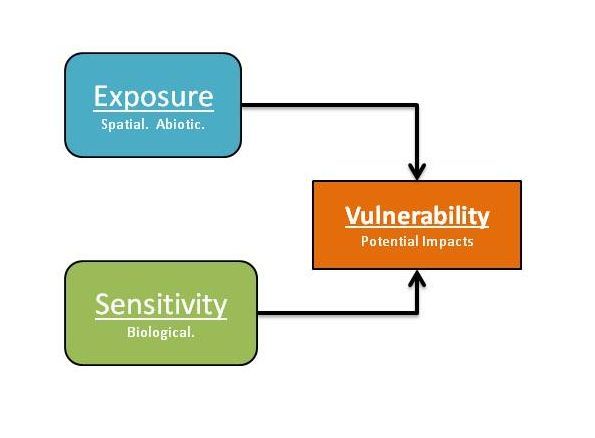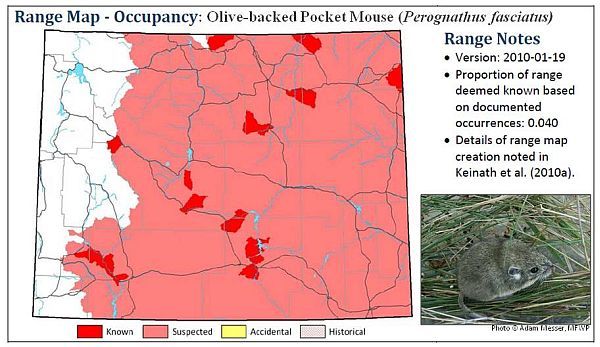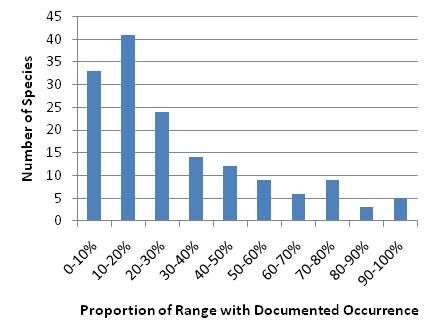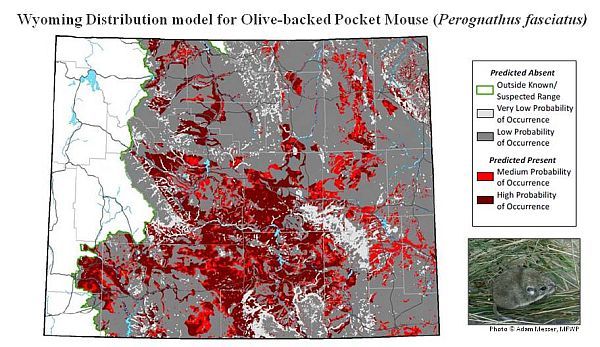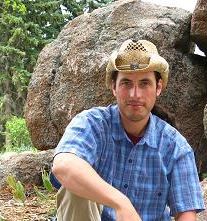With over 200 Species of Greatest Conservation Need (SGCN) identified by Wyoming’s State Wildlife Action Plan, and energy infrastructure likely to double in the next twenty years, there are insufficient time and resources to conduct species-specific, detailed studies. Discussions with state wildlife managers a few years ago identified the need to assess which species are apt to be threatened most by such development so research, conservation, and management can be targeted toward those species before drastic action, such as Endangered Species Act listing, becomes necessary. The goal of the Assessment of Wildlife Vulnerability to Energy Development project (AWVED) is to prioritize Wyoming’s wildlife species relative to potential impacts from future energy development. Specific objectives of AWVED are to 1) define the Wyoming range of all terrestrial vertebrate SGCN, 2) model their potential distribution within the state, 3) quantify the extent of their exposure to energy development, and 4) assess their biological sensitivity to disturbance.
We are quantifying species’ ranges by integrating existing range maps, mapping known occurrences, and collecting input from expert review panels. At a finer scale, we are mapping distribution within these ranges by statistically extrapolating habitat characteristics from points of known occurrence. Potential exposure will then be quantified by examining the degree of concurrence between distribution models and spatially-explicit projections of energy development. Species with a high proportion of their predicted habitat proximate to proposed development will receive a high exposure rank. We will then independently rank species based on their biological sensitivity using metrics synthesized from literature linking species-specific traits to population declines from disturbance. Ultimately, species with both high exposure to disturbance and high sensitivity to that disturbance will be recommended as priorities for further research or management action.
AWVED is jointly funded through the Wyoming Landscape Conservation Initiative of the United States Geological Survey and the State Wildlife Grants program of the Wyoming Game and Fish Department. Key collaborators include the Wyoming Natural Diversity Database, the Wyoming Cooperative Fish and Wildlife Research Unit and the Wyoming Chapter of The Nature Conservancy.
Gallery
CWCS: Wyoming completed its Comprehensive Wildlife Conservation Strategy in 2005. This strategic plan listed 151 terrestrial vertebrate Species Of Greatest Conservation Need (SGCN). Over 70 percent of these species were identified as lacking critical info
CWCS: Wyoming completed its Comprehensive Wildlife Conservation Strategy in 2005. This strategic plan listed 151 terrestrial vertebrate Species Of Greatest Conservation Need (SGCN). Over 70 percent of these species were identified as lacking critical information on which to base conservation action, principally regarding distribution and population status.
Exposure Index: To assess the prevalence of energy development on the landscape, we obtained existing development information from the Wyoming Oil and Gas Conservation Commission and extrapolated trends into the future based on Bureau of Land Management
Exposure Index: To assess the prevalence of energy development on the landscape, we obtained existing development information from the Wyoming Oil and Gas Conservation Commission and extrapolated trends into the future based on Bureau of Land Management Reasonable and Foreseeable Development Scenarios. All pixels in the state were scored on a zero to one scale (low to high exposure) based on their proximity to development.
Exposure Assessment: We are in the process of combining habitat suitability models with the landscape exposure index to assess which species are most exposed to development.
Exposure Assessment: We are in the process of combining habitat suitability models with the landscape exposure index to assess which species are most exposed to development.
Energy development is economically important for Wyoming and the nation. Unfortunately, much development occurs in previously intact habitats that are important for wildlife, including many species listed as Species of Greatest Conservation Need by the Wy
Energy development is economically important for Wyoming and the nation. Unfortunately, much development occurs in previously intact habitats that are important for wildlife, including many species listed as Species of Greatest Conservation Need by the Wyoming Game and Fish Department. (Photo: Stewart Point Rig, 2003, L. Baker. Courtesy of Wyoming Outdoor Council.)
Though the land area actually falling under well pads and roads is only a small percentage of total surface area, these features introduce human activity and fragment formerly contiguous habitat. When considered at the landscape scale, the footprint of en
Though the land area actually falling under well pads and roads is only a small percentage of total surface area, these features introduce human activity and fragment formerly contiguous habitat. When considered at the landscape scale, the footprint of energy development is potentially extensive. (Photo: Jona Field near Pinedale, Wyoming by J. Vanuga. Courtesy of Wyoming Outdoor Council)
Extensive research has documented impacts of energy development on some wildlife, including Sage Grouse, Mule Deer and sagebrush obligate songbirds. However, impacts have not been assessed for vast majority of Wyoming’s Species of Greatest Conservation Ne
Extensive research has documented impacts of energy development on some wildlife, including Sage Grouse, Mule Deer and sagebrush obligate songbirds. However, impacts have not been assessed for vast majority of Wyoming’s Species of Greatest Conservation Need have received minimal, nor are there time or resources to conduct such research. (Photo: Greater Sage Grouse male on lek. Courtesy of Wyoming Outdoor Council.)
The number of petroleum wells currently in Wyoming (very roughly 45,000) is expected to double in the next two decades. At this pace, there is not enough time to conduct impact analysis for all Species of Greatest Conservation Need. (Existing well data fr
The number of petroleum wells currently in Wyoming (very roughly 45,000) is expected to double in the next two decades. At this pace, there is not enough time to conduct impact analysis for all Species of Greatest Conservation Need. (Existing well data from Wyoming Oil and Gas Conservation Commission. Predicted well data from Bureau of Land Management Reasonable and Foreseeable Development Scenarios.)
A species’ vulnerability to disturbance, or the extent to which populations may be impacted by disturbance, is a function of exposure (i.e. the extent to which the species habitat is altered) and sensitivity (i.e., whether the species responds negatively
A species’ vulnerability to disturbance, or the extent to which populations may be impacted by disturbance, is a function of exposure (i.e. the extent to which the species habitat is altered) and sensitivity (i.e., whether the species responds negatively to habitat alteration). The AWVED project seeks to rank Wyoming species relative to both these factors.
To accurately capture where SGCN (species of greatest conservation need) occur in Wyoming, we first developed range maps. Drainages in these maps were evaluated based on whether the species was known to occur there (based on documented observations) or su
To accurately capture where SGCN (species of greatest conservation need) occur in Wyoming, we first developed range maps. Drainages in these maps were evaluated based on whether the species was known to occur there (based on documented observations) or suspected to occur there (based on expert opinion).
Approximately 80% of Wyoming’s Species of Greatest Conservation Need have more than half their range based on assumed presence in the absence of actual observation data.sed on expert opinion).
Approximately 80% of Wyoming’s Species of Greatest Conservation Need have more than half their range based on assumed presence in the absence of actual observation data.sed on expert opinion).
Distribution Models: To refine our estimates of where species occur in Wyoming, we developed habitat suitability models based on known observations and environmental characteristics including vegetation, climate, topography, hydrography and soils.
Distribution Models: To refine our estimates of where species occur in Wyoming, we developed habitat suitability models based on known observations and environmental characteristics including vegetation, climate, topography, hydrography and soils.
Reports & Publications
Keinath, D.A., M. J. Kauffman and G.P. Beauvais. 2008. Assessment of Wildlife Vulnerability to Energy Development (AWVED): 2008 Progress Report. September 15, 2008. View PDF
Keinath, D.A., M. Andersen, and G.P. Beauvais. 2010. Range maps for Wyoming’s Species of Greatest Conservation Need. January 19, 2010. View PDF
Keinath, D.A., M. Andersen, and G.P. Beauvais. 2010. Range and modeled distribution of Wyoming’s Species of Greatest Conservation Need. August 20, 2010. (Main Report, Appendix 2 – Environmental Data, Appendix 3 -Species Index, Appendix 4 – Amphibian Models, Appendix 5 – Bird Models, Appendix 6 – Mammals Models, Appendix 7 – Reptile Models)
Contact
Doug Keinath
Wyoming Natural Diversity Database
Berry Biodiversity Conservation Center University of Wyoming
1000 E. University Ave., Dept. 4304
Laramie, Wyoming 82071
307-766-3013
[email protected]
Pat Anderson (Funder/Collaborator)
United States Geological Survey
Fort Collins Science Center
2150 Center Ave., Building C
Fort Collins, Colorado, 80526
970-226-9100
Website
Glenn Pauley and Bob Lanka (Funder/Collaborator)
Wyoming Game and Fish Department
5400 Bishop Blvd
Cheyenne, Wyoming 82006
307-777-4600
Website
Holly Copeland (Collaborator)
The Nature Conservancy in Wyoming
258 Main Street, Suite 200
Lander, WY 82520
307-332-2971
Website
Project Lead
Doug grew up in central Michigan. He received bachelor’s degrees in Engineering and Natural Resources from the University of Michigan in 1993. He then spent several years working for environmental consultants in Washington DC, where he worked closely with organizations such as USAID and the World Bank on global climate change issues.
Timeline
AWVED was initiated in 2008. Range mapping was completed in 2009 and distribution modeling was completed in 2010 (see associated reports). Exposure analysis is ongoing, with expected completion in 2011. Biological sensitivity analysis will begin in 2011, with expected completion in late 2012. All reports and publications should be complete by the close of 2013.
Funding & Partners
- Wyoming Game & Fish Department
- United States Geological Survey – Wyoming Landscape Conservation Initiative



